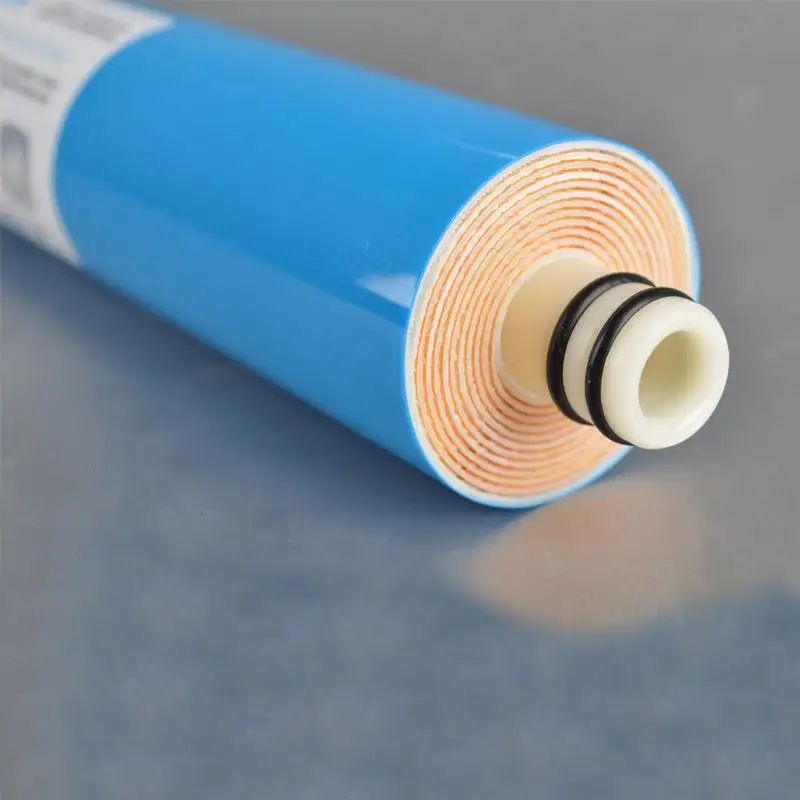Reverse osmosis membranes and ultrafiltration membranes are currently used in many fields. In medicine, the preparation of medical water and medical devices, such as hemodialysis membranes, can remove uremic toxins, hepatotoxins, pesticides, etc. from the blood. Using ultrafiltration membranes to remove urinary toxins, or supplementing sterile water equivalent to the volume of dry filtrate back into the body, can also achieve the purpose of removing urinary toxins, thereby normalizing blood pressure without the physical exertion caused by protein loss. Its cost is lower than hemodialysis. In addition, ultrafiltration membranes are also used in the purification of biological preparations and Chinese herbal medicines, such as ultrafiltration extraction of human growth hormone and concentration of human serum proteins. Refining of Chinese herbal medicine, etc. In the food industry and fermentation industry, such as skim milk concentration, soy sauce decolorization, juice concentration, and instant beverage manufacturing. It is also used in environmental engineering, such as the treatment of electroplating waste liquids such as nickel, copper, gold, silver, zinc, cadmium, etc.

2. Several new membrane separation technologies
(1) Pervaporation uses the difference in solubility and diffusion coefficient of the two components in the mixed liquid in the membrane to separate the two components through permeation and evaporation. There is a solution phase on one side of the membrane, and the other side is evacuated under reduced pressure. The vapor passing through the membrane is cooled and collected or is taken away by inert gas for collection. This method is suitable for the separation of azeotropes or solution systems with similar boiling points and the separation of solutions containing a small amount of volatile components. For example, ethanol-water system, isopropyl alcohol-water system, separation of benzene and cyclohexane, and treatment of waste water and waste liquid have all adopted pervaporation technology.
Table 3-5 Applications of ion exchange membranes
|
Method |
Under testing |
Industrialization |
|
|
Desalination |
1. Refined protein 2. Desalination of sugars 3. Regeneration of electrode solution 4. Artificial Kidney |
1. Seawater and brackish water desalination 2. Treatment of radioactive waste 3. Purified serum and vaccine 4. Desalination of cow milk whey 5. Refined nitrogen-based acids |
|
|
Condensed |
1. Surface management of sulfite paper waste 2. Recycle electroplating waste liquid |
Seawater concentration to produce salt |
|
|
infiltration |
Replacement |
Photosensitive emulsion processing |
1. Fruit juice deacidification 2. Manufacturing of medicines 3. Manufacturing of chemical reagents |
|
Hydrolysis |
Making acids and bases |
||
|
Analysis |
Metathesis |
1. 2NaCH+)(NH4)2 CO3– —Xa2CO4 + 2XH5Cl 2. 2XoCl+Ca(OH)3 =2NAOH+CaCl2 |
|
|
Electrophoretic separation |
1. Sodium ions and potassium ions 2. Sodium ions and lithium ions 3. Isotopes 4. Other elements |
— |
|
|
Electricity |
Resolve diaphragm |
1. Electrolytic salt 2. It can also be used to create weak acids and weak bases 3. Made from NaOH, CO2, Na2co3 4. Electrolysis of Sodium Sulfate |
1. Production of adipic acid by electrolytic dimerization of acrylonitrile 2. The electrolysis of uranium 3. Electrophoretic coating After the removal of soil dibasic acid…•Polymerization to produce salmonic acid |
|
Powder penetration |
Recycling waste alkali |
1. Recovery of acid from pickling waste liquid in metallurgical industry 2. Recovering acids from wood-based sugar solution 3. Recycling and refining of tin |
|
|
Other |
1. Concentration battery 2. Reverse osmosis membrane |
1. Fuel cell separator 2. Battery separator 3. Applications in analysis (activity determination, membrane Shang Ye Yong, selective telegram, etc.) |
|
(2) Gas separation membrane is the most interesting gas separation membrane Pay attention to the oxygen-rich membrane. The so-called oxygen-rich membrane allows air to pass through the membrane under pressure, and on the other side of the membrane, a permeated gas with a higher concentration of oxygen than the air, that is, rich air, is obtained. Gas-rich membrane materials currently mostly use silicone materials to produce ultra-thin films. The oxygen-rich air can be used in combustion projects such as heating furnaces, gas-rich steelmaking, etc., which can improve thermal efficiency and save fuel.
Gaseous membrane is the third type of separation membrane developed in recent years, which is different from solid membrane and liquid membrane. It is made of porous polymer filled with hydrophobicity It is composed of gas in the pores, so the polymer membrane only acts as a carrier. Since the diffusion speed of gas is much greater than that of liquids and solids, the resistance of the gaseous membrane is almost negligible compared with that of the solid membrane, so the gaseous membrane has a very high permeability rate. The use of gaseous membranes can remove H2StNH3, etc. from water, separate gases such as HCN, COz, CL, etc. from aqueous solutions and directly Extracting Br2.I2, etc. from brine can simplify the process and save energy.

 微信扫一扫打赏
微信扫一扫打赏

